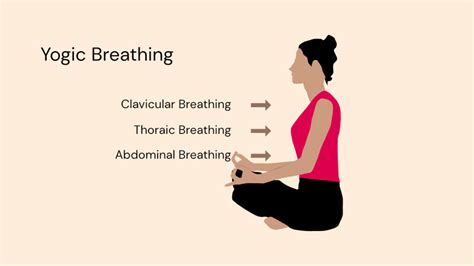Mastering the Art and Science of Yoga Breathwork: Techniques, Benefits, and Practical Applications
Yoga breathwork—also known as pranayama—is a cornerstone of both physical well-being and mental clarity. Whether enhancing physical performance, regulating emotions, or unlocking spiritual potential, breathwork lies at the heart of many yoga traditions. This article explores the breadth of breathwork techniques, their historical roots, scientific underpinnings, and modern-day relevance.
Introduction
Breath is life. Ancient yogis discovered that controlling the breath influences not just bodily functions but also the mind. Pranayama offers pathways to optimize physical health, emotional well-being, and cognitive performance through precise breath regulation techniques. Today, scientists and practitioners alike investigate these techniques from a multidisciplinary perspective, aligning traditional insights with modern research. This guide provides a comprehensive analysis of yoga breathwork fundamentals, balancing ancient wisdom and contemporary evidence, with practical applications for individuals at every stage of practice.
Key Concepts of Yoga Breathwork
- Prana: Life force or energy that flows through the body.
- Nadis: Channels through which prana flows, aligned with physical and energetic anatomy.
- Bandhas: Muscular locks used to contain and direct prana.
- Retention (Kumbhaka): Holding the breath between inhalation and exhalation phases.
- Nostril dominance: Alternating between left and right nostrils affects the body’s physiology and emotions.
Historical Context: From Ancient Roots to Modern Relevance
Yoga breathwork finds its origins in early Vedic traditions (circa 1500 BCE). Over millennia, systems like Hatha Yoga evolved, formalizing breath practices to foster spiritual awakening and physical balance. Classical texts, such as the Yoga Sutras of Patanjali and the Hatha Yoga Pradipika, emphasize the importance of pranayama as part of an integrated yoga practice. In recent decades, researchers have confirmed many physiological benefits, leading to its integration into healthcare settings, wellness programs, and athletic training.
Current State Analysis: Integrating Breathwork into Modern Lifestyles
Today, yoga breathwork is applied in diverse contexts, from reducing anxiety to improving athletic endurance. However, there are challenges related to accessibility, evidence gaps, and misconceptions. Not all breathwork techniques are suitable for everyone; thus, it is essential to match the practice with individual needs and conditions.
Popular Techniques in Modern Breathwork Practices
| Technique | Description | Benefits | Challenges |
|---|---|---|---|
| Nadi Shodhana (Alternate Nostril Breathing) | Alternating between the two nostrils to balance energy channels. | Improves focus, reduces stress. | Requires practice for smooth transitions. |
| Kapalabhati (Skull-Shining Breath) | Rapid, forceful exhalations followed by passive inhalations. | Detoxifies lungs, improves oxygen intake. | Not suitable for people with respiratory conditions. |
| Ujjayi (Victorious Breath) | Slow inhalation through the nose with slight throat constriction. | Promotes relaxation and mental clarity. | May cause discomfort if overused. |
| Bhramari (Bee Breath) | Humming sound during exhalation to calm the mind. | Reduces anxiety and anger. | May not suit noisy environments. |
Practical Applications of Yoga Breathwork
Yoga breathwork offers practical tools for individuals in various fields:
- Sports and Fitness: Athletes use breath regulation to enhance endurance and focus.
- Corporate Wellness: Breathwork techniques help employees manage stress and improve productivity.
- Mental Health: Therapists incorporate breath practices to complement treatment for anxiety and depression.
Case Studies: Breathwork in Action
Consider the following real-world examples where breathwork has shown remarkable outcomes:
- Athletic Performance: Professional marathon runners who practice pranayama have demonstrated increased oxygen efficiency.
- Therapeutic Use: A case study in cognitive-behavioral therapy reported enhanced emotional regulation when breathwork was added to traditional practices.
- Workplace Stress Management: A tech company implemented 5-minute pranayama sessions during breaks, reporting a 15% increase in employee satisfaction.
Stakeholder Analysis: Who Benefits from Breathwork?
| Stakeholder | Benefits | Potential Drawbacks |
|---|---|---|
| Healthcare Providers | Non-invasive treatment for stress-related disorders. | Requires additional training to apply effectively. |
| Yoga Instructors | Expands teaching repertoire and attracts diverse students. | Potential legal liabilities without proper certification. |
| Corporate Managers | Improves employee productivity and job satisfaction. | Initial resistance from employees unfamiliar with practices. |
Implementation Guidelines: How to Start and Sustain a Breathwork Practice
- Assess Individual Needs: Identify the appropriate techniques based on goals and health conditions.
- Start Small: Begin with short daily sessions and gradually increase duration.
- Monitor Progress: Keep a journal to track physiological and emotional changes.
- Seek Guidance: Work with certified yoga instructors or healthcare professionals.
Ethical Considerations
While breathwork offers numerous benefits, there are ethical concerns:
- Accessibility: Ensuring practices are inclusive and not limited to privileged groups.
- Medical Oversight: Avoiding misuse of breathwork as a substitute for medical treatment.
- Cultural Sensitivity: Acknowledging the cultural origins of these practices and avoiding appropriation.
Limitations and Future Research
Despite its advantages, yoga breathwork has limitations. Many studies on pranayama are small-scale and lack rigorous controls. Future research should focus on:
- Comparative studies across different pranayama techniques.
- Longitudinal research examining the sustained effects of breathwork.
- Exploration of breathwork’s impact on neurological disorders.
Expert Commentary
Leading experts in both yoga and neuroscience agree that breathwork is a powerful tool for well-being. However, they caution that personalized approaches are necessary. Dr. Aisha Gupta, a neuroscientist, emphasizes, “The right breathwork technique can significantly alter mental states, but it must be tailored to the individual’s physiology and life context.” Meanwhile, experienced yoga teacher Susan Rodriguez warns against overcomplicating practices, “Consistency matters more than perfection. Simple practices, done daily, yield the best results.”








